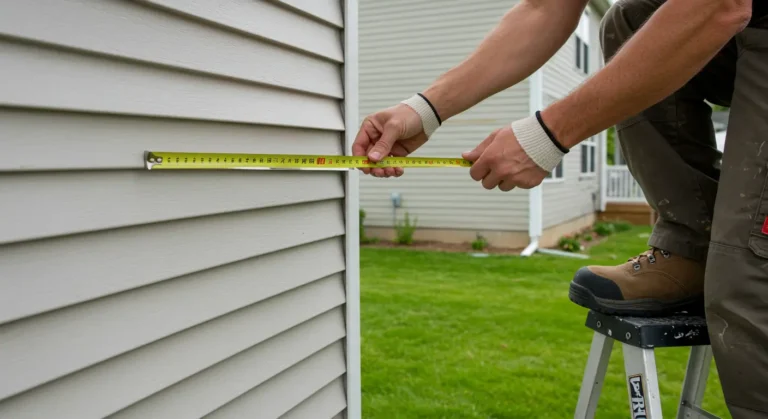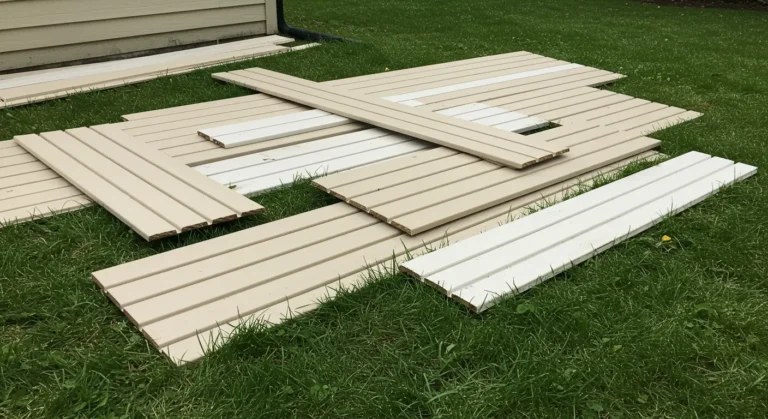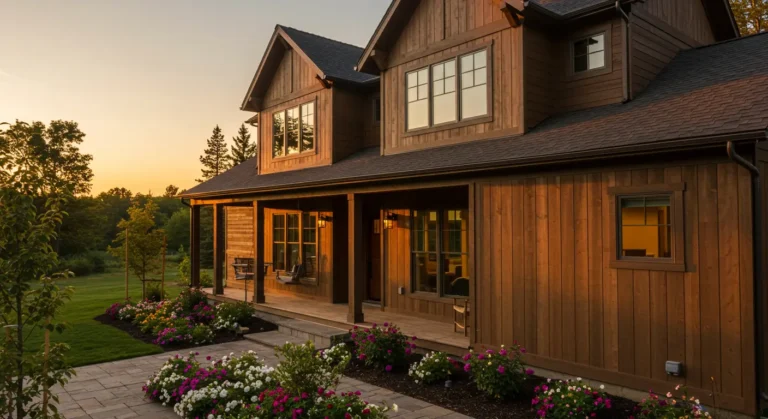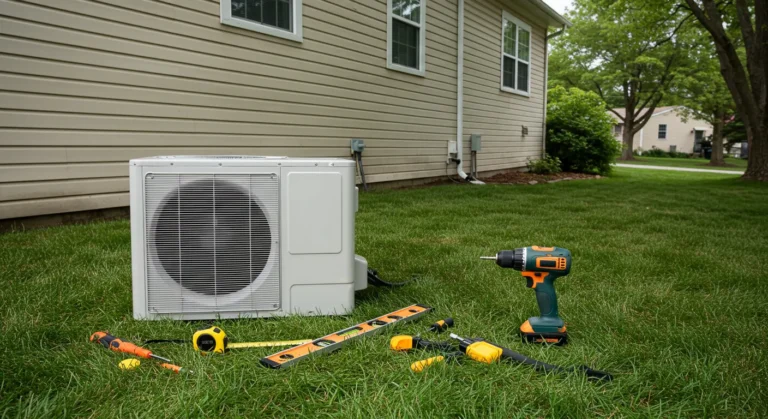Board and batten siding is a classic architectural feature that’s made a bold comeback in modern home design. Whether you’re building a new home or upgrading your exterior, this vertical siding option blends charm and functionality, and it’s more versatile than you might think.
In this guide, we’ll explore what board and batten siding is, how it works, the materials you can choose from, how much it costs, and whether it’s a smart fit for your property. Homeowners across Louisiana and beyond can use this resource to feel confident in their exterior design decisions.
What Is Board and Batten Siding?
Board and batten siding refers to a siding system that uses wide vertical boards (the “boards”) and narrow strips (the “battens”) placed over the seams. This creates a distinctive and dimensional pattern that enhances a home’s curb appeal. The vertical layout draws the eye upward, making homes look taller and more elegant.
Historical Context
Originally used in rural barns and farmhouses, this style provided both protection and visual symmetry. Its weather-tight construction and rustic aesthetic have since evolved into a design choice favored in both traditional and contemporary homes.
Design Versatility
Board and batten siding works beautifully on:
- Entire exterior façades
- Accent walls or gables
- Mixed-siding projects (e.g., combining with lap or shake siding)
This versatility means it pairs well with many home styles, from classic Colonial to Modern Farmhouse to Contemporary Coastal, especially in regions like Louisiana, where homes often blend traditional architecture with updated finishes.
Common Materials Used in Board and Batten Siding
Today’s homeowners are not limited to a single material for achieving this timeless look. Let’s explore the most popular board and batten materials:
1. Wood
Traditional and naturally beautiful, wood siding offers unmatched authenticity.
Pros:
- Warm, rustic look
- Highly customizable with stains or paints
- Eco-friendly when sourced responsibly
Cons:
- Prone to moisture, warping, rot, and pests, especially in humid climates like Louisiana
- Requires sealing and repainting every few years
Ideal for: Historic restorations or those who prioritize authenticity and can commit to maintenance.
2. Vinyl
A favorite for homeowners who want the look of board and batten without the upkeep.
Pros:
- Extremely low maintenance
- Affordable upfront and long-term
- Available in many colors and styles
- Resistant to mold and mildew
Cons:
- Can fade over time with UV exposure
- Less textured and “realistic” compared to natural wood
Ideal for: Cost-conscious homeowners, especially in warm climates like the South, where vinyl performs well.
Learn more about our vinyl siding options.
3. Fiber Cement
A durable and fire-resistant alternative that mimics wood without its vulnerabilities.
Pros:
- Long-lasting (30-50 years)
- Resists fire, insects, and water damage
- Holds paint well and won’t warp
Cons:
- Heavy, increasing installation time and labor costs
- Brittle; can crack if mishandled
Great for: Homeowners who want durability with a traditional look.
Read more about fiber cement board and batten
4. Engineered Wood
Made of wood fibers and resins, engineered wood delivers real-wood aesthetics with increased resistance.
Pros:
- More moisture-resistant than natural wood
- Lightweight and easier to install
- Costs less than fiber cement
Cons:
- Requires regular sealing
- May still absorb moisture if not installed or maintained properly
Perfect for: Homeowners who want the look of wood without high maintenance.
Pros and Cons of Board and Batten Siding
Here’s a side-by-side comparison of the advantages and drawbacks:
| Pros | Cons |
| Boosts curb appeal with elegant vertical lines | Requires precision during installation |
| Works well with various home styles (farmhouse to modern) | Traditional wood needs frequent upkeep |
| Wide range of materials to fit different budgets and climates | Vinyl options can lack the warmth of real wood |
| Can be used as full siding or an architectural accent | Fiber cement and engineered wood may have higher installation costs |
| Compatible with Southern architecture and weather conditions | Not always DIY-friendly due to installation complexity |
For a deeper dive, check out this guide on board and batten siding pros and cons.
Is It Right for Your Home?
Whether you live in the suburbs of Baton Rouge or the bayous of Lafayette, board and batten siding can offer the style and performance you need; if you choose the right material and installation method.
Best Home Styles:
- Farmhouse
- Cottage
- Craftsman
- Modern
- Southern Traditional
Southern Climate Considerations
In Louisiana’s hot, humid, and storm-prone environment, siding must resist:
- Excessive moisture
- UV damage
- Mold/mildew growth
That’s why fiber cement and vinyl are typically better suited for homeowners in the South compared to untreated wood.
Need expert advice? Our local team offers personalized siding installation services backed by years of experience in Southern weather conditions.
Board and Batten Siding Costs
The cost of board and batten siding depends on several variables:
- Material type
- Labor rates in your area
- Square footage
- Site accessibility
Average Costs by Material (Labor + Materials)
| Material | Cost Per Sq. Ft. | Cost for 2,000 sq. ft. Home |
| Vinyl | $3 – $7 | $6,000 – $14,000 |
| Wood | $7 – $12 | $14,000 – $24,000 |
| Fiber Cement | $5 – $10 | $10,000 – $20,000 |
| Engineered Wood | $4 – $9 | $8,000 – $18,000 |
Louisiana tip: Labor costs may fluctuate based on storm seasons and contractor availability.
Ask about a free siding inspection to receive an accurate estimate based on your home’s layout and material preferences.
Installation Process and What to Expect
Installing board and batten is more intricate than traditional horizontal siding. Precision is essential for both aesthetic consistency and moisture control.
Step-by-Step Breakdown
- Site Prep & Inspection
Professionals assess your walls, remove old siding if needed, and prepare the sheathing. - Weather Barrier Application
A vapor-resistant layer protects your home from moisture, critical in Louisiana’s humid climate. - Board Placement
Wide vertical boards are measured and installed with proper spacing. - Batten Installation
Battens are nailed over the seams to seal and style the exterior. - Finishing Touches
Caulking, sealing, and painting wrap up the process. Fiber cement and vinyl may skip painting.
DIY vs. Professional
While vinyl board and batten panels are available for DIYers, incorrect installation can lead to:
- Warping or uneven seams
- Water penetration behind panels
- Voided warranties
We strongly recommend professional installation for lasting performance.
Vinyl vs. Wood Board and Batten: Which Is Better?
| Feature | Vinyl | Wood |
| Cost | $ | $$–$$$ |
| Maintenance | Low (wash with hose) | High (paint, seal, inspect) |
| Aesthetic | Clean, modern | Natural, rustic |
| Durability | 20–40 years | 15–30 years (with care) |
| Eco-Friendliness | Mixed (PVC) | High (if sustainably sourced) |
Verdict:
Choose vinyl for low-maintenance affordability, especially in humid climates. Choose wood if you want the real deal and don’t mind upkeep.
Summary
Board and batten siding offers a beautiful blend of history, versatility, and modern charm. From Southern farmhouses to sleek architectural homes, it’s a siding choice that stands out.
By selecting the right material for your climate and aesthetic, and working with professionals who understand local needs, you can enjoy decades of durability and curb appeal.
Book a Free Siding Inspection Today
Whether you’re leaning toward fiber cement, vinyl, or engineered wood, our team at Lone Wolf Siding is here to guide you through every step.
Frequently Asked Questions
What is board and batten siding made of?
Board and batten siding can be made from:
- Solid wood
- Vinyl
- Fiber cement
- Engineered wood
Each offers different durability, cost, and visual appeal.
Is board and batten siding expensive?
Not necessarily. Vinyl is very affordable, while wood and fiber cement options can increase costs due to material price and labor. Expect to invest more in higher-end finishes.
How long does board and batten siding last?
- Vinyl: 20-40 years
- Fiber Cement: 30-50 years
- Wood: 15-30 years (with good maintenance)
- Engineered Wood: 20-30 years
What style of house is board and batten siding?
It fits many styles, especially:
- Farmhouse
- Craftsman
- Modern Coastal
- Ranch-style homes
You can also use it as a decorative accent on more traditional exteriors.
Can you use board and batten with vinyl siding?
Absolutely. Many manufacturers produce vinyl siding in board and batten patterns. It’s a great way to get the look without heavy upkeep.
Need help choosing the right siding?
Contact Lone Wolf Siding today to schedule your free inspection and consultation.




